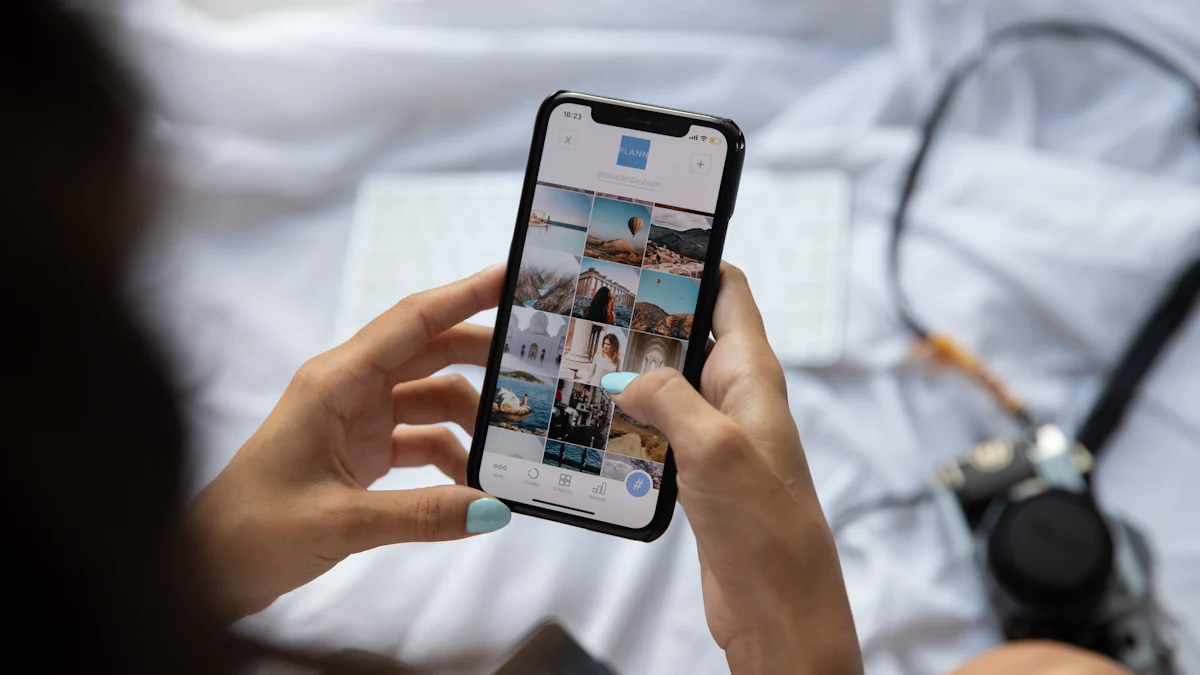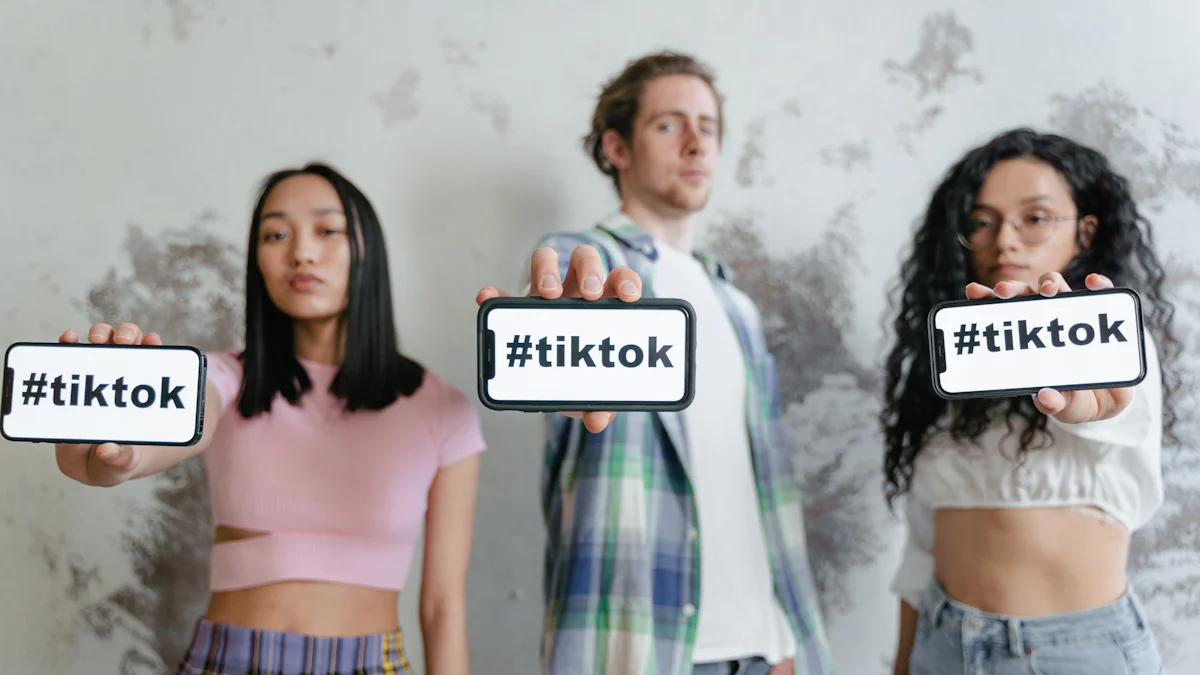A Complete Guide to Influencer Discovery for Brands and Marketers

In today’s world, influencer discovery is a game-changer for marketing. It helps you find the right influencers who can connect with your audience and amplify your message. These partnerships aren’t just about promotion—they’re about building trust. When influencers share your brand with their followers, it feels authentic. Why? Because their audience already trusts them.
Strong relationships with influencers lead to better results. When you work with those who share your values, it creates genuine connections. Transparency also plays a big role. Disclosing partnerships shows respect for the audience, which boosts credibility. By investing in these relationships, you’re not just growing your brand—you’re building lasting trust.
What Is Influencer Discovery?
Definition and Importance
Influencer discovery is the process of finding individuals who can make a meaningful impact on your target audience. It’s not just about picking influencers with massive followings. Instead, it’s about identifying those who genuinely connect with your audience and can share your brand’s message in an authentic way. This step is the foundation of any successful influencer marketing campaign.
Why is it so important? Because the right influencers can reach your audience in ways traditional advertising can’t. They bring trust and relatability to the table. When you choose influencers who align with your brand’s values, you create a consistent and authentic image. This connection helps your audience see your brand as trustworthy and credible.
How Influencer Discovery Fits Into Influencer Marketing
Think of influencer discovery as the first step in building a strong influencer marketing strategy. Without it, you’re shooting in the dark. You need to know who can best represent your brand and engage your audience.
When you find the right influencers, they become your bridge to your audience. They help you cut through the noise of social media and deliver your message directly to the people who matter most. This process ensures your campaigns feel personal and relatable, not forced or overly promotional.
Key Challenges in Influencer Discovery
Finding the perfect influencers isn’t always easy. Here are some common challenges you might face:
- Identifying influencers whose audience matches your target demographic.
- Ensuring the influencer’s values align with your brand’s identity.
- Avoiding partnerships that result in inauthentic content.
- Using platforms that lack robust search tools for influencer discovery.
These challenges highlight why influencer discovery requires time and effort. But when done right, it sets the stage for impactful campaigns that resonate with your audience.
The Influencer Landscape

Types of Influencers
Not all influencers are created equal. They come in different sizes, each offering unique benefits for your brand. Here’s a quick breakdown to help you understand their reach and engagement:
| Type of Influencer | Follower Count | Engagement Rate |
|---|---|---|
| Nano Influencers | 1K to 10K followers | 3.69% |
| Micro Influencers | 10K to 100K followers | Double the overall average |
| Mid-tier Influencers | 100K to 500K followers | Solid engagement at affordable prices |
| Macro Influencers | 500K to 1M followers | Broad reach with established voices |
| Mega Influencers | 1M+ followers | High fees for large audiences |
Nano-influencers are perfect for campaigns that need authenticity. Their smaller audiences trust them, which leads to higher conversion rates. Plus, they’re budget-friendly and can connect with niche groups. On the other hand, mega-influencers offer massive reach but come with hefty price tags. If you’re looking for the best influencers to target specific demographics, micro-influencers might be your sweet spot. They deliver high engagement and ROI, especially in niche markets.
Platform-Specific Insights
Each platform has its own vibe. Knowing where your audience hangs out helps you choose the right influencers. Here’s what makes some of the top platforms stand out:
| Platform | Unique Characteristics |
|---|---|
| Aesthetically pleasing visuals, interactive stories, niche communities, authenticity, skilled content creation | |
| TikTok | Short-form videos, viral potential, trend-driven content, authenticity, creative tools, discovery algorithm |
| YouTube | Longer videos, high engagement, educational content, search engine visibility, monetization potential |
Instagram is great for visually stunning campaigns. TikTok thrives on creativity and viral trends, making it ideal for younger audiences. YouTube works best for in-depth storytelling and educational content. By understanding these platforms, you can match your campaign goals with the right influencers and maximize your impact on social media.
Strategies for Effective Influencer Discovery
Setting Campaign Goals and Identifying Your Audience
Before diving into influencer discovery, you need a clear plan. Setting specific goals ensures your efforts stay focused and effective. Here’s how you can define your campaign goals:
- Be specific. Instead of saying, “I want more sales,” aim for something like, “Increase product sales by 20% in three months.”
- Make goals measurable. Track metrics like engagement rates or sales numbers to know if you’re on the right path.
- Keep it achievable. Set realistic targets based on your resources and timeline.
- Stay relevant. Align your goals with your brand’s overall objectives.
- Add a timeline. Deadlines keep you accountable and help measure progress.
Once your goals are set, shift your focus to your audience. Who are they? What do they care about? Understanding your audience helps you find influencers who truly resonate with them. Use tools to analyze audience demographics and match them with the ideal influencer search criteria. This step ensures your influencer marketing campaign connects with the right people.
Evaluating Influencer Authenticity and Engagement
Not all influencers are created equal. Some may have large followings but lack genuine connections with their audience. To find the best influencers, focus on authenticity and engagement.
- Use data-driven tools to check engagement rates and audience demographics. These tools can also spot unusual follower growth patterns.
- Conduct manual audits. Look at their content and how their audience interacts with it. Are the comments meaningful, or do they seem generic?
- Analyze their presence across multiple platforms. Consistency in engagement shows they’re authentic and trusted.
By evaluating these factors, you’ll avoid influencers who might harm your brand’s credibility. Instead, you’ll partner with those who can genuinely connect with your audience.
Aligning Influencers With Brand Values
Your influencers should reflect your brand’s identity. When their values align with yours, the partnership feels natural and authentic. Here’s how you can ensure alignment:
- Choose influencers who share your ethics and values.
- Set clear expectations for the campaign. Outline your core values and messaging upfront.
- Co-create content. This allows influencers to maintain their voice while staying true to your brand’s identity.
- Approve content before it goes live. This ensures everything aligns with your guidelines.
Long-term relationships with influencers who genuinely support your brand are the ultimate goal. These partnerships build trust and create consistent messaging across social platforms.
Pro Tip: Always prioritize quality over quantity. A smaller, engaged audience is far more valuable than a massive, disengaged one.
Using Data to Assess Audience Quality
When you’re choosing influencers, it’s not just about their follower count. You need to dig deeper and assess the quality of their audience. Data plays a huge role here. It helps you figure out if an influencer’s followers are the right fit for your brand. So, what should you look at?
- Engagement Rate: This tells you how active an influencer’s audience is. Are they liking, commenting, or sharing posts? A high engagement rate shows that followers are loyal and genuinely interested in the content.
- Audience Demographics: You want to know who’s following the influencer. Look at details like age, gender, location, and interests. This ensures their audience matches your target market.
- Content Quality and Relevance: Check the influencer’s posts. Are they visually appealing? Do they tell a story that grabs attention? High-quality content drives better engagement and conversions.
- Authenticity and Credibility: Not all followers are real. Use tools to spot fake accounts or bots. An influencer with a genuine audience will have a stronger impact on your campaign.
- Brand Alignment and Values: Does the influencer’s content align with your brand’s message? Their values should resonate with yours to create a natural partnership.
Pro Tip: Don’t just rely on numbers. Take time to analyze the influencer’s content and audience behavior.
Using data helps you avoid influencers who might look good on paper but don’t deliver results. It ensures you’re investing in partnerships that truly connect with your audience. By focusing on these metrics, you’ll build campaigns that feel authentic and drive real impact.
Tools and Platforms for Influencer Discovery

Features of Influencer Discovery Tools
When you’re searching for the perfect influencers, having the right tools can make all the difference. These tools simplify the process and help you find influencers who align with your brand and marketing goals. But what features should you look for? Here’s a quick rundown:
- Filters that let you narrow down influencers by niche, location, or audience size.
- Engagement analytics to evaluate how well influencers connect with their followers.
- A user-friendly interface that makes navigation easy, even for beginners.
- Access to a large, verified influencer database to ensure you’re working with real accounts.
- Tools to measure engagement rates, analyze audience demographics, and flag suspicious activity like fake followers.
- End-to-end workflow management, from discovery to campaign execution.
These features save you time and ensure you’re making data-driven decisions. They also help you avoid common pitfalls, like partnering with influencers who don’t match your audience or values.
Popular Tools for Influencer Marketing
Not all tools are created equal, so it’s important to choose one that fits your needs. Here are some of the most popular platforms for influencer discovery and how they stand out:
- Traackr: Offers influencer discovery, relationship management, and audience insights.
- CreatorIQ: Uses AI-powered comparisons and advanced filters to find the best influencers for your campaign.
- Heepsy: Includes fraud detection features and allows filtering by platform.
- Pitchbox: Automates outreach with smart templates and follow-up sequences.
- NinjaOutreach: Helps you find influencer contact info and manage relationships effectively.
- Influencity: An all-in-one tool for analyzing and organizing influencers.
Each of these tools brings something unique to the table. For example, Traackr is great for managing long-term relationships, while Heepsy excels at spotting fake followers. By exploring these options, you can find the ultimate guide to influencer discovery that works for your brand.
Leveraging Analytics for Better Decisions
Analytics play a huge role in influencer discovery. They help you predict which influencers will deliver the best results for your marketing campaigns. Here’s how you can use analytics to your advantage:
| Analytics Method | Description |
|---|---|
| Predictive Analytics | Uses big data to forecast influencer success by analyzing past campaign data and trends. |
| AI-driven Platforms | Streamlines influencer discovery by quickly identifying influencers that align with brand values. |
| Engagement Metrics | Provides insights into key metrics like engagement rates and audience demographics. |
Platforms like Socialinsider and Traackr offer tools to analyze engagement and segment influencers based on authenticity. These insights help you predict future campaign performance and make smarter decisions. By leveraging analytics, you can ensure your campaigns are not only effective but also aligned with your brand’s goals.
Pro Tip: Don’t just rely on numbers. Combine analytics with manual reviews to ensure the influencers you choose truly resonate with your audience.
Building Long-Term Relationships With Influencers
Why Relationships Matter in Influencer Marketing
Building long-term relationships with influencers is more than just a strategy—it’s a game-changer for your brand. When you collaborate with influencers over time, their audience starts seeing your partnership as genuine. This trust translates into better engagement and higher conversions.
"Building a strong relationship with an influencer makes their endorsements feel more genuine to their audience, fostering trust and increasing the likelihood of conversions."
Long-term influencer collaborations also protect your brand’s reputation. By consistently working with creators who align with your values, you create a reliable and authentic image. Plus, repeated exposure through these partnerships keeps your brand top-of-mind for their followers.
- Long-term relationships enhance trust, which is far more effective than one-off promotions.
- Consistent partnerships lead to higher conversion rates, proving the value of sustained engagement.
Best Practices for Collaboration
Want to collaborate with influencers successfully? Follow these best practices to ensure mutual success:
- Define clear objectives. Know exactly what you want to achieve from the partnership.
- Research and choose the right influencers. Their audience should align with your target market.
- Craft a compelling offer. Provide unique experiences or perks that resonate with the influencer.
- Build genuine relationships. Engage with them personally to foster trust.
- Leverage cross-promotion. Create campaigns that benefit both your brand and the influencer.
- Allow creative freedom. Let influencers express themselves authentically while promoting your brand.
- Focus on long-term engagements. Partnering with creators over time ensures sustained benefits.
These steps help you build partnerships that feel natural and deliver results.
Maintaining Trust and Communication
Trust and communication are the backbone of any successful influencer relationship. To maintain these, focus on creating genuine connections. Respect the influencer’s values and ensure they align with your brand. Transparency is key—be upfront about expectations and goals.
Here’s how you can keep the relationship strong:
- Establish a feedback loop. Regularly discuss what’s working and what isn’t.
- Be transparent. Honesty fosters integrity and strengthens trust.
- Provide proper orientation. Help influencers understand your brand’s core values.
- Stay consistent. Repeated campaigns show your commitment and build authenticity.
Authenticity matters. When influencers believe in your product, their audience will too. By maintaining open communication and mutual respect, you’ll create partnerships that last and thrive.
Measuring the Success of Influencer Marketing
Key Metrics to Track
Tracking the right metrics is essential to measure the success of your influencer marketing campaign. Here are the key ones you should focus on:
Engagement Rates
Engagement rates show how well an influencer connects with their audience. Look at likes, comments, shares, and saves on their posts. A high engagement rate means their followers are genuinely interested in their content. It’s not just about numbers—it’s about meaningful interactions.
Conversion Rates
Conversion rates tell you how many people took action after seeing your campaign. Did they click a link, use a coupon code, or make a purchase? Tools like affiliate links and tracking codes can help you measure this. By analyzing individual influencer performance, you can identify which partnerships drive the best results.
ROI (Return on Investment)
ROI measures the financial success of your campaign. It compares the money you spent to the revenue you earned. While calculating ROI can be tricky, setting clear goals and tracking costs makes it easier. Keep in mind that ROI isn’t always immediate. Sometimes, the value lies in long-term brand awareness.
Note: Don’t just focus on one metric. A combination of engagement, conversions, and ROI gives you a complete picture of your campaign’s impact.
Tools for Measuring Campaign Performance
Using the right tools simplifies performance tracking. Here are some popular options:
- Socialinsider: Great for tracking engagement rates, real-time performance, and even competitor analysis.
- Influencer Marketing Platforms: These platforms track metrics like reach, impressions, and conversions. They also generate detailed campaign reports.
These tools help you gather data quickly and make informed decisions. They’re essential for staying on top of your campaign’s performance.
Using Insights to Improve Future Campaigns
Every campaign teaches you something. Use those lessons to refine your strategy. Here’s how:
- Analyze your results to spot areas for improvement.
- Look at what worked well and replicate it in future campaigns.
- Adjust your goals and tactics based on past performance.
By learning from your data, you’ll create campaigns that are more effective and aligned with your audience. Remember, influencer marketing is all about evolving and staying relevant.
Future Trends in Influencer Marketing
The Role of AI and Virtual Influencers
Artificial intelligence is transforming how you approach influencer discovery and campaigns. It’s like having a super-smart assistant that handles the heavy lifting. Here’s how AI is shaping the future:
- It analyzes massive amounts of data to uncover trends and consumer preferences.
- It segments audiences with precision, helping you target the right people.
- It automates repetitive tasks, giving you more time to focus on creative strategies.
- It tracks campaign performance, measuring KPIs and optimizing results.
- It identifies influencers who align with your brand’s goals, ensuring authentic partnerships.
Virtual influencers are also gaining traction. These digital characters, like Lil Miquela, offer brands full control over content and messaging. You can even create your own virtual influencer, designing their look and backstory to match your brand perfectly. They’re adaptable, consistent, and free from the unpredictability of human influencers.
Fun Fact: 81% of marketers say AI positively impacts their work, making it a must-have tool for modern marketing strategies.
Niche Communities and Micro-Influencers
Micro-influencers are the unsung heroes of influencer discovery. They might not have millions of followers, but their audiences are highly engaged and loyal. Here’s why they’re so effective:
- They connect with niche communities, aligning perfectly with specific products or services.
- Their followers trust them, leading to higher engagement rates.
- They create targeted, relevant content that feels authentic.
If you’re looking to build trust and credibility, micro-influencers are your go-to. Their endorsements often influence purchasing decisions, especially in niche markets. By focusing on these smaller influencers, you can foster a sense of community and drive meaningful results.
The Shift Toward Authenticity and Transparency
Consumers are tired of inauthentic content. They want real stories and honest experiences. This shift is reshaping influencer marketing. Here’s what you need to know:
- 63% of online shoppers are more likely to buy products recommended by their favorite influencers.
- Teens trust influencers more than traditional celebrities, with 70% saying they rely on influencer recommendations.
To stay ahead, you need to prioritize authenticity. Collaborate with influencers who genuinely align with your values. Encourage them to share raw, engaging content that resonates with their audience. This approach builds trust and fosters long-term loyalty.
Pro Tip: Authentic storytelling isn’t just a trend—it’s a best practice for connecting with your audience.
Strategic planning is the backbone of successful influencer marketing. When you align your goals with the right influencers, you create campaigns that resonate with your audience. Focus on engagement metrics, authenticity, and audience demographics to ensure a perfect fit. Tools and data simplify this process, helping you measure success and refine your strategy.
Building long-term relationships with influencers adds value to your brand. These partnerships foster trust and create consistent messaging. Stay ahead by keeping up with trends like AI, micro-influencers, and authenticity. By combining strategy, tools, and insights, you’ll craft campaigns that leave a lasting impact.
FAQ
What is the best way to find influencers for my brand?
Start by defining your campaign goals and audience. Use influencer discovery tools to filter by niche, location, or engagement rate. Check their content and audience demographics to ensure they align with your brand. Focus on authenticity over follower count.
How do I know if an influencer’s audience is real?
Look at their engagement rate. High numbers with low interaction can signal fake followers. Use tools to detect bots or unusual growth patterns. Check comments for genuine interactions instead of generic responses like “Nice!” or emojis.
Should I work with micro-influencers or mega-influencers?
It depends on your goals. Micro-influencers offer high engagement and niche audiences. Mega-influencers provide massive reach but cost more. If you want authenticity and conversions, micro-influencers are a great choice. For brand awareness, go with mega-influencers.
How can I measure the success of my influencer campaign?
Track metrics like engagement rates, conversions, and ROI. Use tools to monitor clicks, sales, or coupon code usage. Compare results to your campaign goals. Don’t forget to analyze audience feedback and sentiment for deeper insights.
What’s the biggest mistake to avoid in influencer marketing?
Avoid choosing influencers based only on follower count. Focus on their engagement, authenticity, and alignment with your brand values. A poorly matched influencer can harm your credibility and waste your budget.
Pro Tip: Always prioritize quality over quantity when selecting influencers. A smaller, engaged audience is more valuable than a large, disengaged one.
See Also
Comprehensive Tips for Choosing the Right Influencer Platform
Seven Key Steps for Crafting an Effective Influencer Strategy
Seven Essential Steps to Create Your Influencer Marketplace
Tips for Planning a Memorable Brand Trip for Influencers
Best Influencer Marketing Platforms to Boost E-commerce Growth
